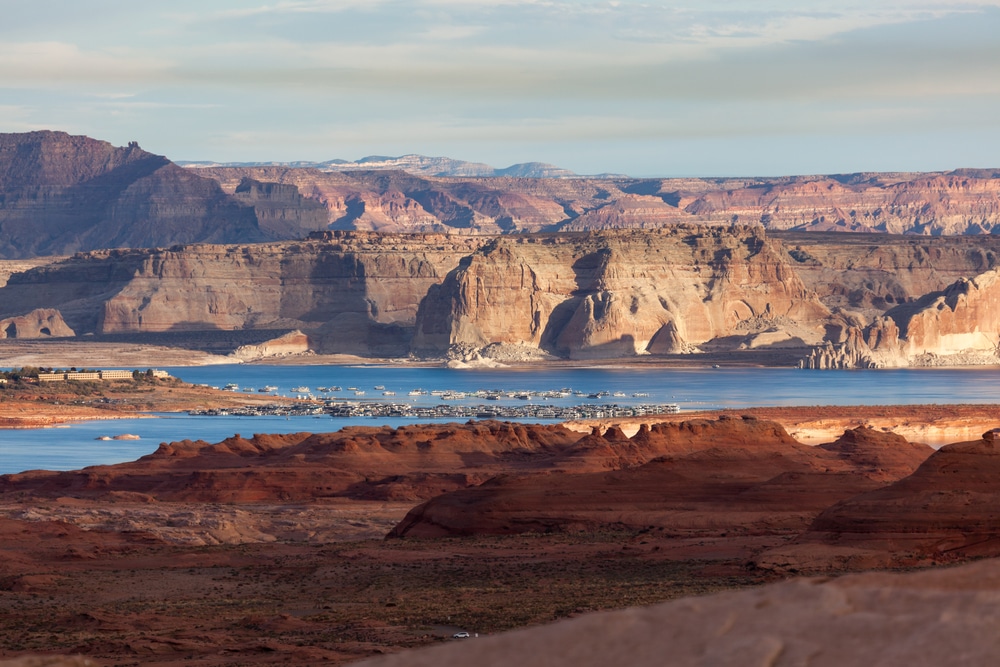The water level at a lake that provides hydroelectric power to millions of homes and businesses is falling dangerously low—so low, in fact, that the dam may soon stop generating electricity.
Officials are concerned that prolonged drought and increased stress on the Colorado River could push the pool elevation at Utah’s Lake Powell below this critical point. Lake Powell, nestled along the Colorado River in far southern Utah, is a vital resource for multiple states across the American Southwest.
The U.S. federal government created Lake Powell by building Glen Canyon Dam, which began damming the Colorado River in 1963. It took another 17 years for the river to release enough water to fill the lake to capacity. The Glen Canyon, which the lake’s main body stretches across, won’t be able to pull the water needed to generate power at 1,064 meters (3,490 feet) – just 11 meters (35 feet) below the recent record low.
Sitting at the border of Utah and Arizona, Lake Powell is part of a system that supplies water for 40 million people in multiple western states, and through the Glen Canyon Dam, supplies power for more than five million people. Following a very dry winter, officials are confident water levels will rise in the coming months once snow melts in the Rockies, but warn that more may need to be done to ensure Glen Canyon Dam can keep producing hydropower in the years ahead.
The Bureau of Reclamation’s Acting Commissioner David Palumbo said in a statement earlier this month: ‘This year the Colorado River Basin has experienced extremely variable conditions with a record high snowpack one month, followed by weeks without snow. ‘This variable hydrology and a warmer, drier west have drastically impacted our operations and we are faced with the urgent need to manage in the moment.’










